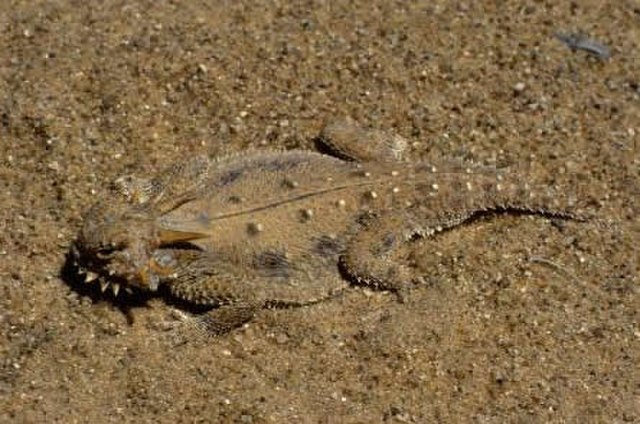Phagomimicry is a defensive behaviour of sea hares, in which the animal ejects a mixture of chemicals, which mimic food, and overwhelm the senses of their predator, giving the sea hare a chance to escape. The typical defence response of the sea hare to a predator is to release two chemicals - ink from the ink gland and opaline from the opaline gland. While ink creates a dark, diffuse cloud in the water which disrupts the sensory perception of the predator by acting as a smokescreen and as a decoy, the opaline, which affects the senses dealing with feeding, causes the predator to instinctively attack the cloud of chemicals as if it were indeed food. This ink is able to mimic food by having a high concentration of amino acids and other compounds that are normally found in food, and the attack behaviour of the predator allows the sea-hares the opportunity to escape.
Aplysia californica displaying phagomimicry in response to predator threat.
Anti-predator adaptations are mechanisms developed through evolution that assist prey organisms in their constant struggle against predators. Throughout the animal kingdom, adaptations have evolved for every stage of this struggle, namely by avoiding detection, warding off attack, fighting back, or escaping when caught.
Anti-predator adaptation in action: the seal shark Dalatias licha (a–c) and the wreckfish Polyprion americanus (d–f) attempt to prey on hagfishes. First, the predators approach their potential prey. Predators bite or try to swallow the hagfishes, but the hagfishes have already projected jets of slime (arrows) into the predators' mouths. Choking, the predators release the hagfishes and gag in an attempt to remove slime from their mouths and gill chambers.
Fruit bats forage by night to avoid predators.
Camouflage illustrated by the flat-tail horned lizard, its flattened, fringed and disruptively patterned body eliminating shadow
Kallima inachus masquerading as a dead leaf





